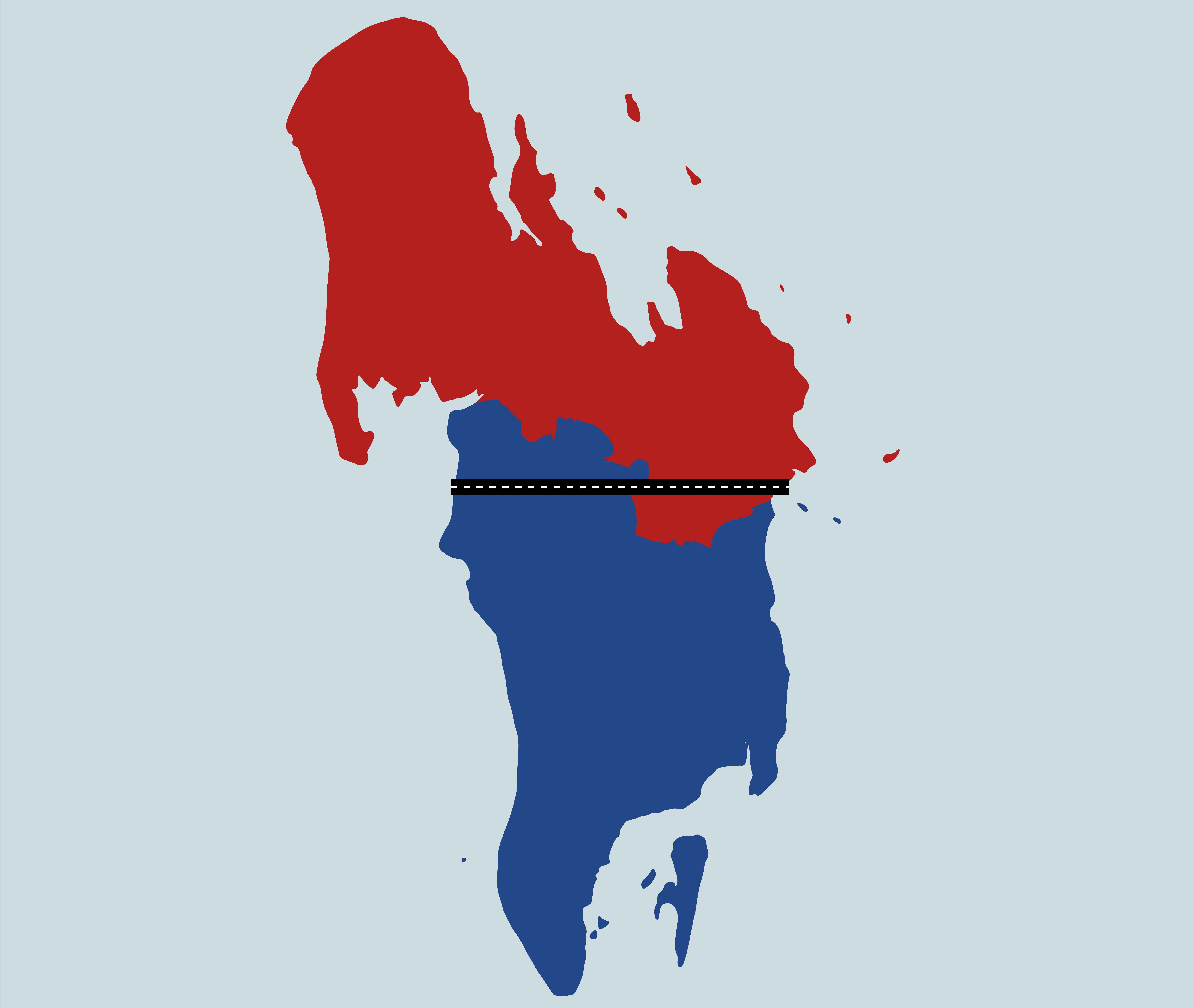Elbit America’s maritime sensors, effectors & networks enable distributed maritime operations.
The products described in this article are currently in development or in production by Elbit America’s 3,500 employees, at its engineering and manufacturing facilities, across seven U.S. states.
SITREP: U.S. Navy and Western coalition maritime forces conduct surface and undersea operations to counter Red’s sea-mining and covert infiltration activities.
More weeks passed.

Unable to achieve its goals through provocative air operations, Red and its Eastern coalition decided to counter Blue’s air operations asymmetrically. Rather than confront aircraft in the skies above the Big Island, they would attempt to prevent U.S. and Western coalition aircraft from being able to fly entirely – by going after Blue’s fuel supply.
The Expeditionary Strike Group (ESG) was still over the horizon, but the Navy and Marine aircraft were forward-basing and refueling from Blue bases on land. Even pushing them back to their ships would reduce their ability to respond to Red, shorten their time on station and delay their reaction time.
Like Red, Blue is dependent on imported fuel, by ship, into its sole deep-water port in the southeast to power everything from fighter jets to municipal services. Without a steady and consistent diet, Blue would grind to halt within days, and its Peacekeepers would need to retreat to their distant ships. But, even if desired, Red’s air forces cannot reach and attack the port. Red would need to control the sea if it wants to control the land.
Red’s backers provided simple but capable Unmanned Underwater Vehicles (UUVs) and rudimentary training to operate them. The plan was simple – sail undetected under the sea from Red’s east coast and place sea mines to block access to Blue’s seaport. To give the UUVs greater chance of success, Red’s fleet of small diesel submarines would sail along Blue’s east and west coasts to land special forces to conduct sabotage behind the lines, giving the U.S. Navy and Marines something to focus their attention.
Fortunately, Team Blue could do more than one thing at a time.

Seagull USV participated in the U.S. Navy’s TF-59 Digital Horizon exercise in late 2022. Seagull is a multi-mission unmanned surface vessel, providing increased maritime domain awareness, ASW and mine countermeasure (MCM) capabilities with significantly lower operational risk.
Recognizing the seaport’s vulnerability, a Navy unit equipped with Seagull Unmanned Surface Vehicles (USVs) mentored Blue’s forces to conduct mine-countermeasure operations – searching for, detecting and neutralizing the mines and the UUVs used to place them.

TRAPS is a compact, towed reelable active/passive variable depth ASW sonar enabling low cost manned and unmanned surface vessels to detect, track and target submarines.
Seagull USVs equipped with Towed Reelable Active/Passive Sonars (TRAPS) were employed to locate Red’s mini-subs, vectoring Blue’s P-3 Orion and U.S. Navy P-8 maritime surveillance aircraft as well as the ESG’s ASW helicopters, employing sonobuoys and light-weight torpedoes to localize and engage Red’s diesel submarines.

Sparton Corporation – an Elbit Systems of America company – is a world leader in the design, development and production of complex maritime electronic systems, including ASW sonobuoys. Elbit America’s Aydin Displays business provides ruggedized naval displays for the mission systems stations of the P-8 Poseidon multi-mission maritime (MMA) aircraft.
Throughout the anti-sub operation, the Blue coalition’s undersea forces were continuously updated with real time intelligence and targeting information provided by offboard, long-range, very low frequency (VLF) electrodynamic C-BASS sound projectors that communicated with U.S. and allied subs while submerged and without the need to surface antennas to receive transmissions.
To further complicate Blue’s response to Red’s undersea activities, Red sailed its entire remaining fleet of six surface combatants, including one destroyer capable of antisubmarine operations, and transited south attempting to distract if not intimidate Blue’s ESG.

SLUAS is an undersea-launched, attritable, small form factor UAS deployed from a standard 3-ince launch canister that will radically change how the U.S. Navy and its allies find, fix, track and target surface and undersea threats.
Sub launched UAS (SLUAS) located and tracked the Red Surface Action Group, who were entirely unaware of the presence of US submarines. With SLUAS providing over-the-horizon targeting, a US submarine used a long-range torpedo to sink the only Red vessel that posed a potential threat to the ESG. The remaining ships returned to Red’s port to avoid a similar fate.
The few surviving Red subs soon followed, considering themselves lucky to make it back to port, but the Special Operators they left behind were less fortunate – unable to conduct their behind-the-lines sabotage missions successfully, most were killed or captured by Blue with some requesting asylum and providing valuable intelligence.
On land, at sea and in the air, Red was having no success achieving its post conflict-resolution aims. Desperation was to drive Red to take further uncalculated risks.

Maritime sensors, effects and networks from Elbit America and Sparton enable US and allied/partner navies to blind, see and kill threats in all domains, enabling effective Distributed Maritime Operations to secure freedom of the global commons.








